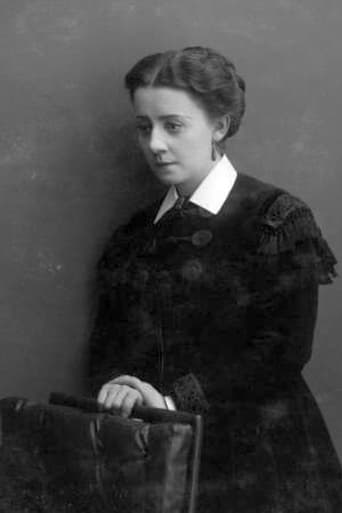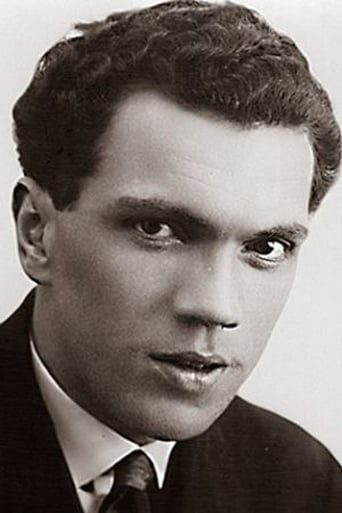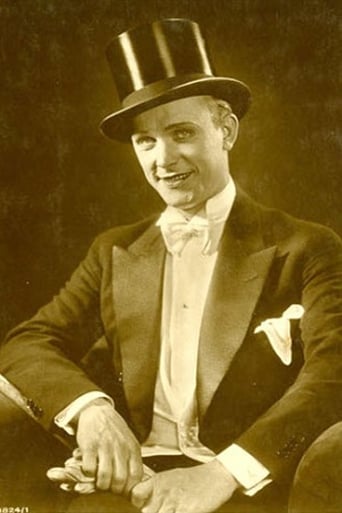NekoHomey
Purely Joyful Movie!
XoWizIama
Excellent adaptation.
Intcatinfo
A Masterpiece!
Deanna
There are moments in this movie where the great movie it could've been peek out... They're fleeting, here, but they're worth savoring, and they happen often enough to make it worth your while.
dkwootton
Mother follows a divided family during a workers strike in the Russian Revolution of 1905. After the father is killed in a skirmish and the son is sentenced to work at a labor camp, the mother revises her ideology and helps to plan a prison escape. The film concludes with troops subduing the revolt and the death of the mother and son at the hands of the soldiers. Vsevstol Pudovkin's (1893-1957) method of montage more closely resembles Kuleshov's "brick laying" method, where the combination of cutting helps to more effectively convey or dramatize an event, in contrast to Eisenstein who advocated a montage of colliding images to generate a meaning that cannot be depicted on film. The film may be silent, but the sounds are transmitted from the image. We feel the silence drop in the bar as the father demands vodka. Mother marks a clear development in the structure and formation of the motion picture, but modern day audiences may be desensitized to the films spell. The film utilizes a cinematic language familiar to the contemporary moviegoer, but we may take the easily followed, continuous action and cutting that develops suspense for granted as we witness everyday movie vocabulary in its conception. While Pudovkin shared different theoretical views from Eisenstein, the film includes abstract sequences as well. After the death of the father, Pudovkin cuts to several images of trees blowing in the wind as a break in the action. He draws a parallel between blocks of ice plummeting down a river and the crowds of people marching, while also establishing simultaneous action for a crucial plot point near the end of the film. Mother also experiments with subjectivity, as we iris to the mother's memory of her son hiding weapons (using an x-ray vision effect to show the storage beneath the floorboards) and as we are given images of water and a child after Pavel reads the getaway plan as if to show his yearning for freedom. While the portrayal and privileging of a hero, the prison escape sequence and the climactic chase renders Mother rather Hollywood, ultimately the film is too tragic to be a Hollywood film.
Will E
Pudovkin's Mother is a strong film that refused to be bound by the limitations of its time and should remain interesting to contemporary audiences. The plot of the film is simply outstanding. While some would say it was to be expected since the film is based off of a novel by Maxim Gorky, it should be noted that good source material does not guarantee cinematic success. The film follows a mother and her revolutionist son, Pavel, as they navigate a series of difficulties resulting from her son's allegiance.With no speech, a major challenge for silent films is the creation of multidimensional characters. Pudovkin overcomes this challenge by being able to capture the emotions of the characters. I thought the mother, was exceptionally interesting. Her struggle did not only represent that of a loving mother, but also that of a movement. Pudovkin make great use of the camera, whether it was a side profile emphasizing the pensiveness of the character or a well-timed frontal close-up, he facilitates our ride on this emotional roller-coaster.For the most part, I really enjoyed the pacing of the film. While the pacing did vary in tempo, it was always well within its own "groove." Even in the extremely exciting conclusion, one did not get to feel the extremely fast-paced tempo of a Battleship Potemkin, which I believe speaks to the differences between the directors. On that note, it was interesting to see how Pudovkin's use of montage differed. His cuts were far more gradual and subtle when compared to Eisenstein's in Battleship which contributed to the stability of the film.All in all, Mother was a good watch and one of the stronger films that we have seen.
dina013
Pudovkin's "Mother" is a film about the feelings of the working class, speaking to the proletariat as the foundation of the nation. Through all its symbols and plot, the film aligns itself with that category of cinema aimed to refresh the enthusiasm for Communist ideals. It is almost as if it is a duty to keep the memory of the first rebels fighting against the powerful and all-pervasive bourgeoisie. In that sense, the film sensitizes its audience towards fighting along the ideas of the party. However banale and meaningless such a pursuit would be for today's audience, the manner in which Pudovkin realizes in conveying this message is remarkable. Overall, we see extremely good and good cinema.The movie is about a young man, Pavel, who is aligned with the worker's cause and organizes a strike. His mother is always in the background, a perfect symbol of the Russian peasant woman in her simplicity and emotion. The family suffers because the father is a drunkard and very violent man. Pavel's involvement with the strike and the fights that result lead eventually to the murder of his father. The tension builds up to the trial and then continues as the workers try to liberate Pavel from prison, One of the aspects I've liked most about this movie is the fascinating montage. The techniques used in the film make it align itself with other productions from that period (like Eisenstein's or Kuleshov's) which emphasized the capturing of details and using short shots that would convey the plot in a different manner than the overly self-explanatory long shot. Hence, we have the details of physical contact in the altercations, the portrait of the lady who protects the working class seen through a dusty glass, some beautiful close-ups showing the emotion of the characters (especially the mother), caressing hands, eyes, and other shots that put together make this film a fine piece of cinematography.The film's symbolism is also evident and a strong feature of the film.We have the tumultuous flow of water and blocks of ice which stand for the excitement of the revolution and the peasants as a force. The mother itself is a symbol of unity. We see her at first a sensible being, faithful, but naive, and ultimately helpless in the face of the corrupt bureaucrats. In the end, we see her a strong figure, holding the flag with pride. The suspense is built up in an interesting way during the trial scene, with multiple symbols of the superficiality of the old order: the hiccups of Pavel's defender which suggest ridicule, the sleeping man, and the mare, a symbol of aristocracy and superficial ideals. The film ultimately presents the clash of two camps: the peasants who are represented as pure and filled with ideals (with the mother, the beautiful woman, and young people as representatives) versus the camp of bourgeoisie, with corrupt and indifferent characters, sometimes violent, sometimes diabolic, but never invoking any sympathy to the audience.
Lee Eisenberg
Released right after "Battleship Potemkin", "Mother" shows a woman forced to choose between siding with her labor-organizing son or her corrupt husband. The movie makes double sure that we get to see the living conditions in Russia in 1905, but it also uses ice as a metaphor. There are a few scenes where we see ice breaking up on the ocean; it basically shows that the old order is slowly but surely coming apart. I have to admit that this is the only Vsevolod Pudovkin movie that I've ever seen, but it's certainly a good one, if only as a historical reference. A noticeable difference between Eisenstein and Pudovkin was that Eisenstein was into typage (meaning that he liked to choose any random person who looked right for the role), while Pudovkin was very fixated on whom he wanted.




